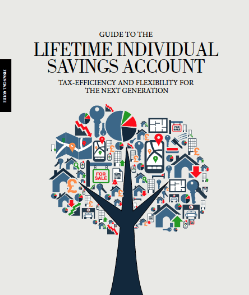LIFETIME ISA: This guide explains the rules and restrictions for the new Lifetime Individual Savings Accounts.
Most investors and young savers will use a LISA to buy a first time home or to save for later life. But, to open a Lifetime ISA, you must be at least 18 years old and under the age of 40.
How a Lifetime Individual Savings Account works in the United Kingdom.
The maximum amount you can put into a LISA is £4,000 in any one tax year (6 April to 5 April). You can continue doing so until you reach the age of fifty (50).
The government adds 25% as a bonus to the amount that you have saved in your account (up to £1,000 per tax year).
Note: The Lifetime ISA limit is £4,000. It would also count towards the annual ISA allowance limit of £20,000 for this current tax year.
There are several different types of investment that you can have. You can either hold cash or you can hold stocks and shares. The rules also allow you to have a combination of both in a Lifetime ISA.
As a rule, there is a charge of 25% to withdraw cash or assets from a Lifetime Individual Savings Account. But, the charge would not apply if [you] the policyholder:
- Is buying a first home.
- Is sixty (60) years of age or older.
- Has a terminal illness and not expected to live for the next 12 months.
LISA rules change when the policyholder turns 50. From then on, you would be unable to pay money into your Lifetime ISA. You also lose the ability to earn the 25% bonus. Even so, the account would stay open. That means the savings would continue earning interest and any investment returns available.
Note: In most cases, you must be resident in the United Kingdom to open, and continue paying into, a Lifetime ISA. An exception applies for a crown servant (e.g. in the diplomatic service) and their spouse or civil partner.
Using Lifetime ISAs to Buy a First Home
As a first time buyer, you would be able to use your savings to help you secure a mortgage. But, you can only use it when buying a first home if all these apply:
- The property does not cost more than £450,000.
- You buy the property at least 12 months after opening the Lifetime ISA.
- You use a conveyancer or a solicitor to act for you in the purchase (the ISA provider pays the funds direct to them).
- You are using a mortgage to buy the property.
Buying a Home with Someone Else
 If you buy a home with another person they may have a Lifetime ISA too. If so, the other person can also use their LISA savings and the government bonus as well.
If you buy a home with another person they may have a Lifetime ISA too. If so, the other person can also use their LISA savings and the government bonus as well.
The other person would pay a 25% withdrawal charge to use their Lifetime ISA savings if they own or they have a legal interest in property. An example would be if they are a beneficiary of a trust that has property included.
Lifetime ISA rules allow you to transfer money from a Help to Buy ISA to a LISA. But, the 25% withdrawal charge would apply if you transfer money from a LISA to a Help to Buy ISA.
Note: It is possible to have a Help to Buy ISA and a Lifetime ISA as well. If so, you can only use the government bonus to buy a first time home from one of the accounts.
Saving for Later Life with a Lifetime ISA
There is a 25% charge to withdraw money from, or transfer a Lifetime ISA to other types of ISAs before the age of sixty. But, once you reach sixty (60) you can take the savings out of your Lifetime ISA – charge free.
Lifetime ISAs are one several ways to plan your retirement income and save money for later life. But, a Lifetime Individual Savings Account would end on the date of the death if the policyholder dies. In this case, there would be no charge to withdraw the funds or the assets from the account.

